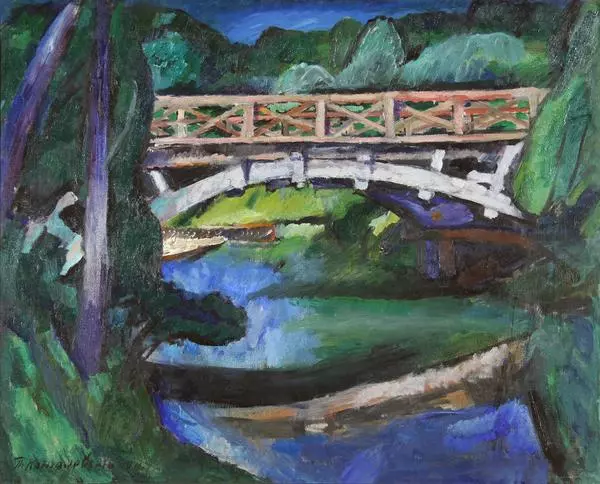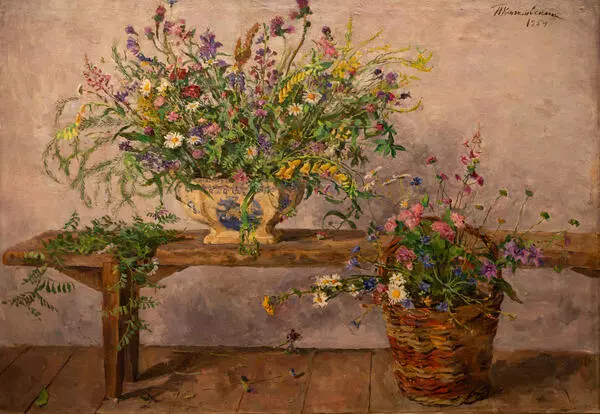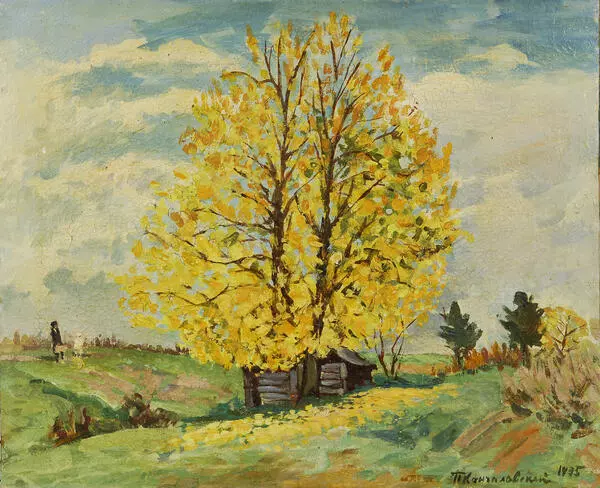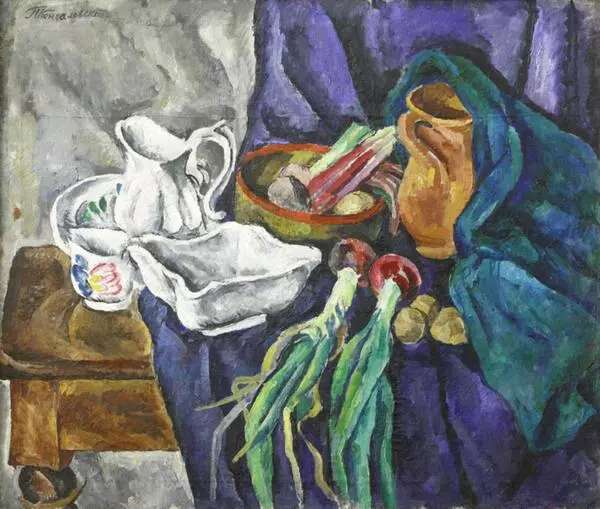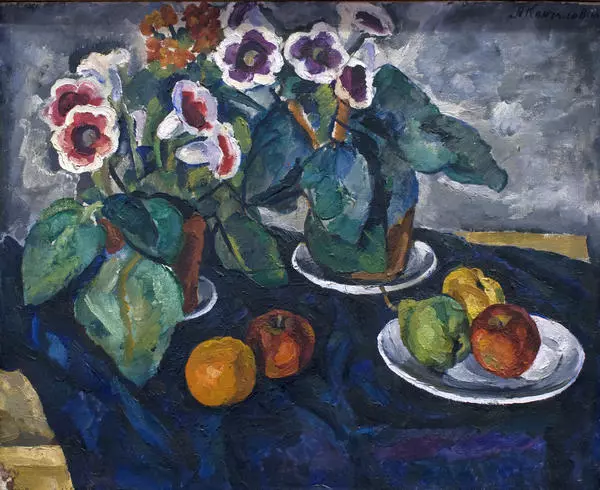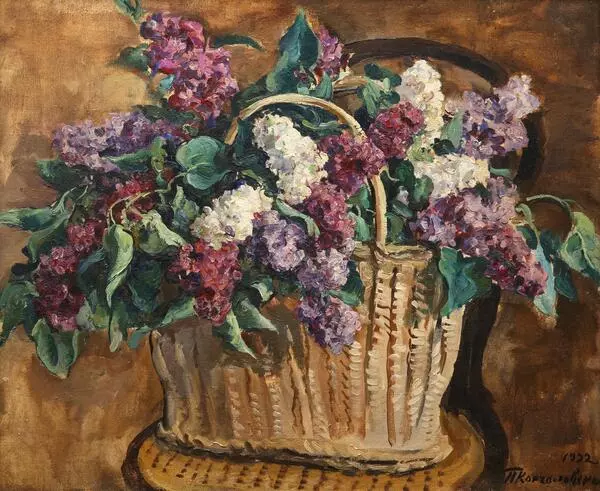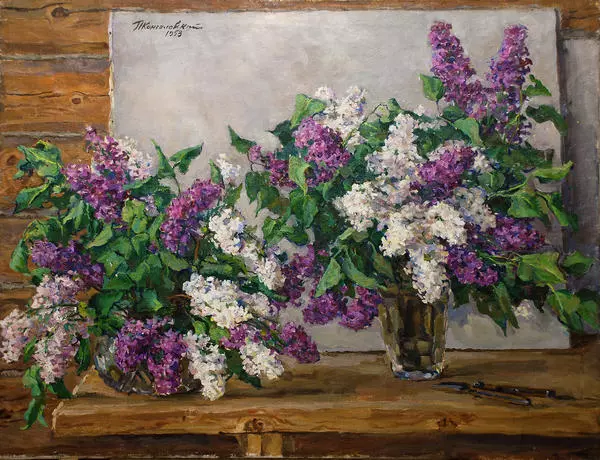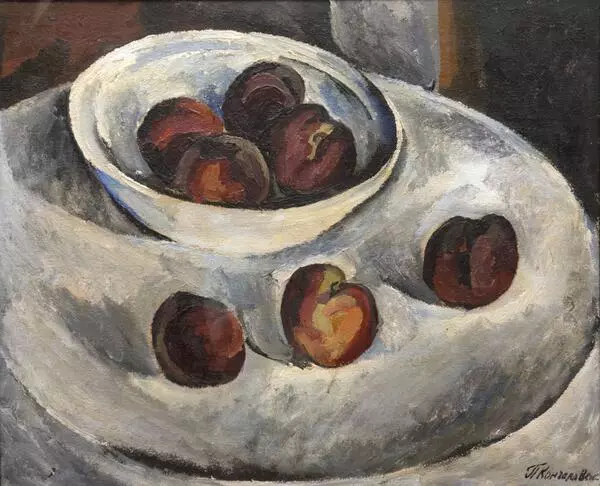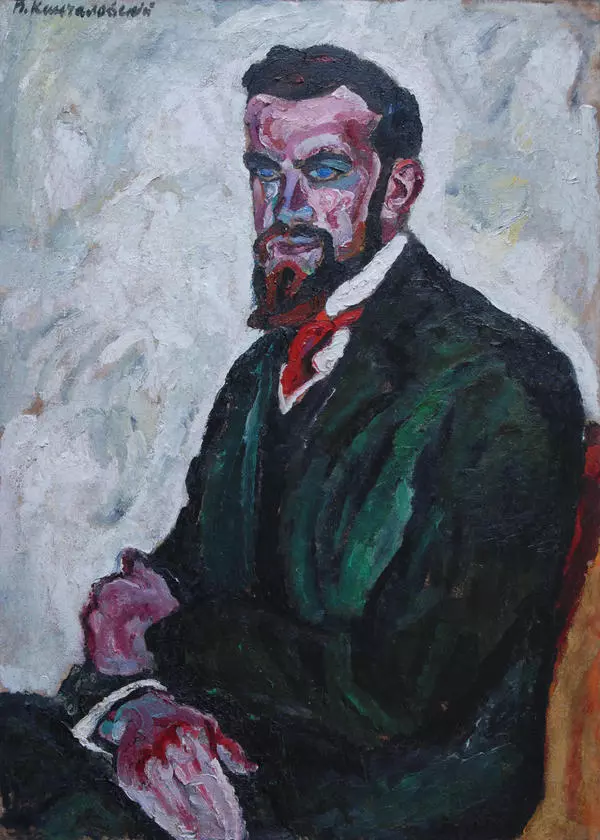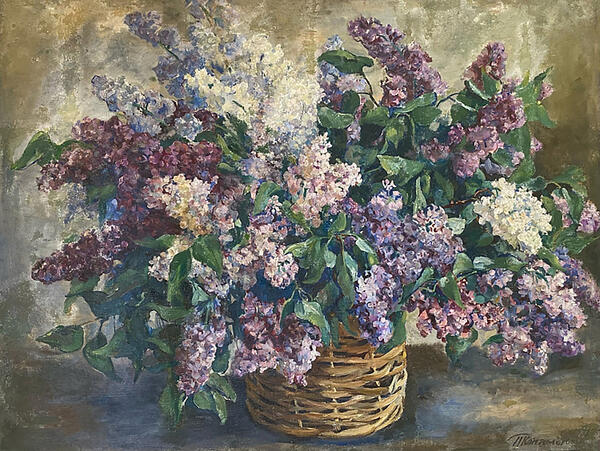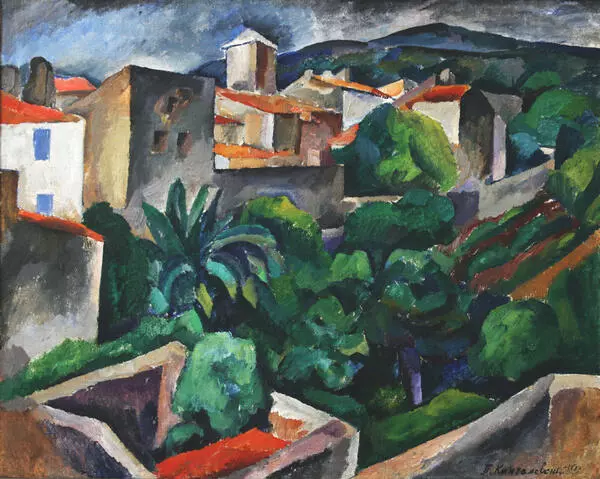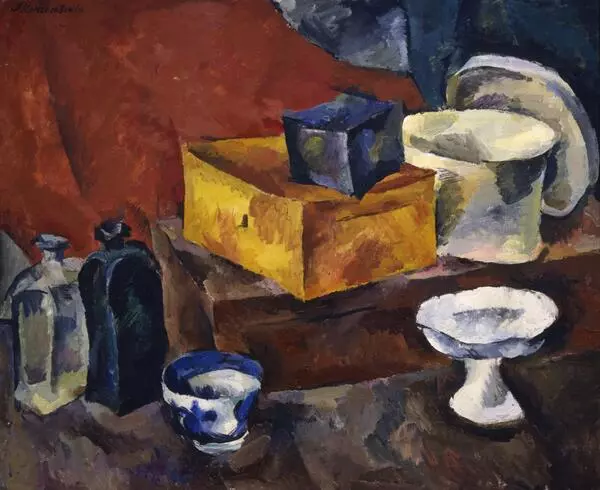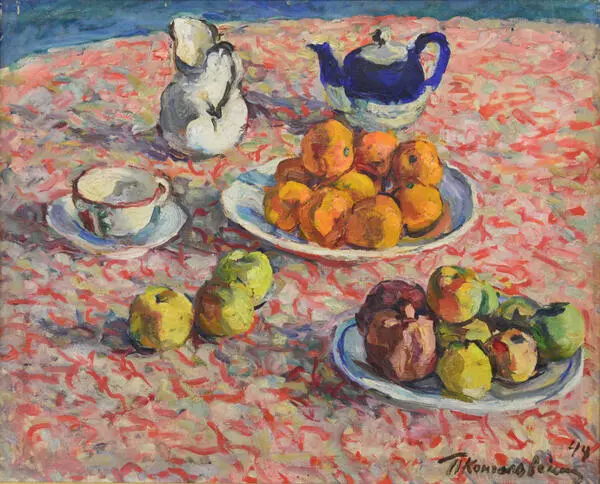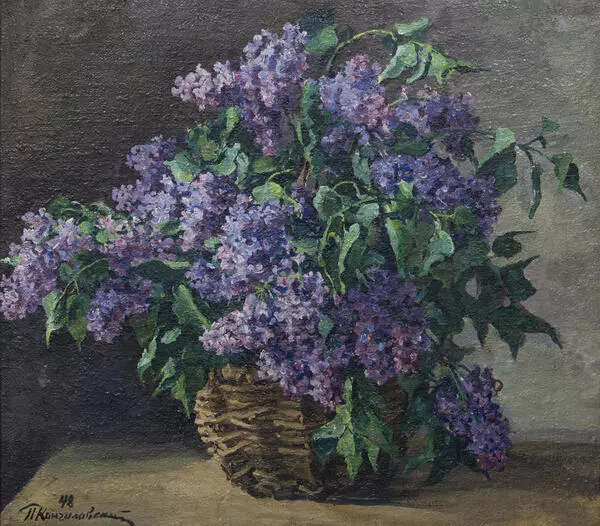The world of artist Pyotr Konchalovsky, a founding member of the Jack of Diamonds association, is full of color and tangible contrary to ephemeral and ivory-towered world of artists from the Blue Rose or esthetic painters of the World of Art.
The featured exhibit Still Life by Pyotr Konchalovsky painted in 1916, commonly known as The Crayfish, is one of conceptual paintings created for the Jack of Diamonds association. It is one of the best works in the artist’s creative heritage.
Pastose, as though molded with thick strokes objects — spatial and realistic, in accurate and bright colors, their natural shapes proclaim the hymn to joy of life and the ode to happiness of being. The Still Life is a vivid illustration of the paramount principle of the artists united in the Jack of Diamonds association — asserting objects and thingness, contrasting with spatiality, and creating robust, realistic and stable visual images. This principle could be implemented to the full extent in the painting of objects — still life, which became the main art genre of the associated artists.
Following his associate and fellow-thinker Ilya Mashkov, who painted in 1910 the landmark painting for the Jack of Diamonds, famous still life Blue Plums, Pyotr Konchalovsky creates a clearly decorative painting. The objects on the table are compositionally accurate to the finest details, only their order on the tabletop is seemingly arbitrary.
Tempting red crayfish, shiny golden herring, bright radish, the painted metal tray heightens the whiteness of the pitcher and the glimmer of the glass goblet. Bold coloristic manner, natural plastic of the shapes and lines mesmerize and arise admiration. It is as if the viewer is invited to explore the surface of the tabletop, examine each object and admire its beauty and naturalness.
The painting brings involuntary associations with still life paintings of famous Dutch artists — orderly, balanced and symmetrical. And the same visual excitement from the perfection of natural shapes that make the foundation of the Russian daily life. The style of the painting is closely related to the Russian popular culture and traditions of street signs, that were so important for the esthetic concept of the Jack of Diamonds.
The featured exhibit Still Life by Pyotr Konchalovsky painted in 1916, commonly known as The Crayfish, is one of conceptual paintings created for the Jack of Diamonds association. It is one of the best works in the artist’s creative heritage.
Pastose, as though molded with thick strokes objects — spatial and realistic, in accurate and bright colors, their natural shapes proclaim the hymn to joy of life and the ode to happiness of being. The Still Life is a vivid illustration of the paramount principle of the artists united in the Jack of Diamonds association — asserting objects and thingness, contrasting with spatiality, and creating robust, realistic and stable visual images. This principle could be implemented to the full extent in the painting of objects — still life, which became the main art genre of the associated artists.
Following his associate and fellow-thinker Ilya Mashkov, who painted in 1910 the landmark painting for the Jack of Diamonds, famous still life Blue Plums, Pyotr Konchalovsky creates a clearly decorative painting. The objects on the table are compositionally accurate to the finest details, only their order on the tabletop is seemingly arbitrary.
Tempting red crayfish, shiny golden herring, bright radish, the painted metal tray heightens the whiteness of the pitcher and the glimmer of the glass goblet. Bold coloristic manner, natural plastic of the shapes and lines mesmerize and arise admiration. It is as if the viewer is invited to explore the surface of the tabletop, examine each object and admire its beauty and naturalness.
The painting brings involuntary associations with still life paintings of famous Dutch artists — orderly, balanced and symmetrical. And the same visual excitement from the perfection of natural shapes that make the foundation of the Russian daily life. The style of the painting is closely related to the Russian popular culture and traditions of street signs, that were so important for the esthetic concept of the Jack of Diamonds.




